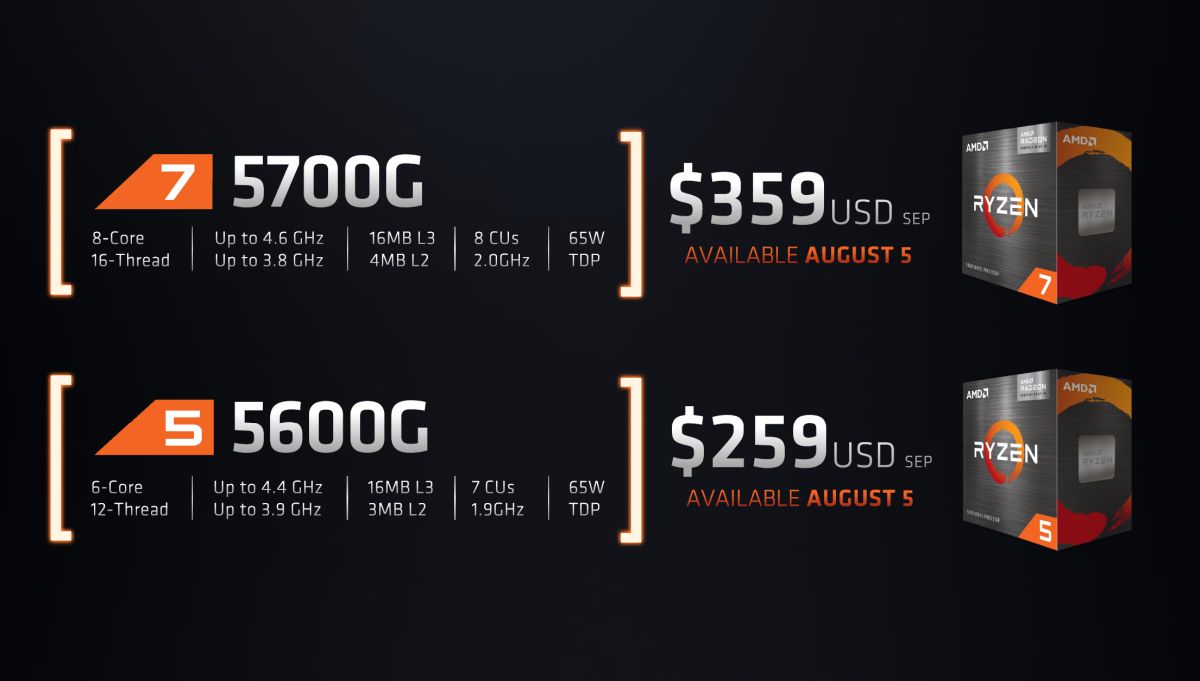Starting with the Ryzen 7 5700G, the CPU portion of the APU houses an 8-cores, 16-threads processor that features a base and boost clock of 3.8GHz and 4.6GHz. In addition, it has an L2 and L3 Cache of 4MB and 16MB respectively. Naturally, because it’s an APU, the 5700G also comes equipped with integrated 8 Compute Units (CUs), Vega-powered Radeon cores, running at a boost clock of 2GHz. Moving on, the 5600G is very clearly an APU aimed towards the mid-range market. Its CPU uses a 6-cores, 12-threads build, has a base and boost clock of 3.9GHz and 4.4GHz, respectively. As for its graphics cores, the Vega-based Radeon integrated GPU houses 7CUs running at a clockspeed of 1.9GHz. Oh, and it has a 3MB L2 and 16MB L3 Cache.
As with all current-generation Ryzen processors, both the Ryzen 7 5700G and Ryzen 5 5600G are based on AMD’s Zen 3 CPU architecture and are made using the 7nm TSMC die lithography. Both APUs will be available globally from 5 August onwards, with pricing starting at US$259 (~RM1068) for the 5600G and US$359 (~RM1480) for the 5700G.
